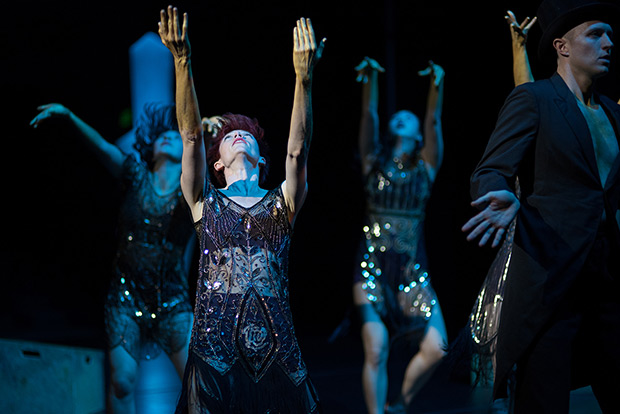
© Hillary Goidell. (Click image for larger version)
RAWdance
Brilliant Alarm, 14, Roar
★★★★✰
San Francisco, Yerba Buena Center for the Arts
24 January 2019
rawdance.org
www.ybca.org
Celebration was definitely in the air at YBCA’s Forum space on Thursday night. Not only was RAWdance opening a new winter program, including two world premieres, but the evening also marked the local gem’s fifteenth anniversary. The packed house was buzzing with excitement, everyone jazzed to see what was in store. So did the program live up to the celebratory atmosphere? With the serious themes that unfolded, I wouldn’t characterize the work as festive. And yet, every piece celebrated intelligent, provocative choreography, superb dancing and the company’s uncanny ability to present work that never loses its way.
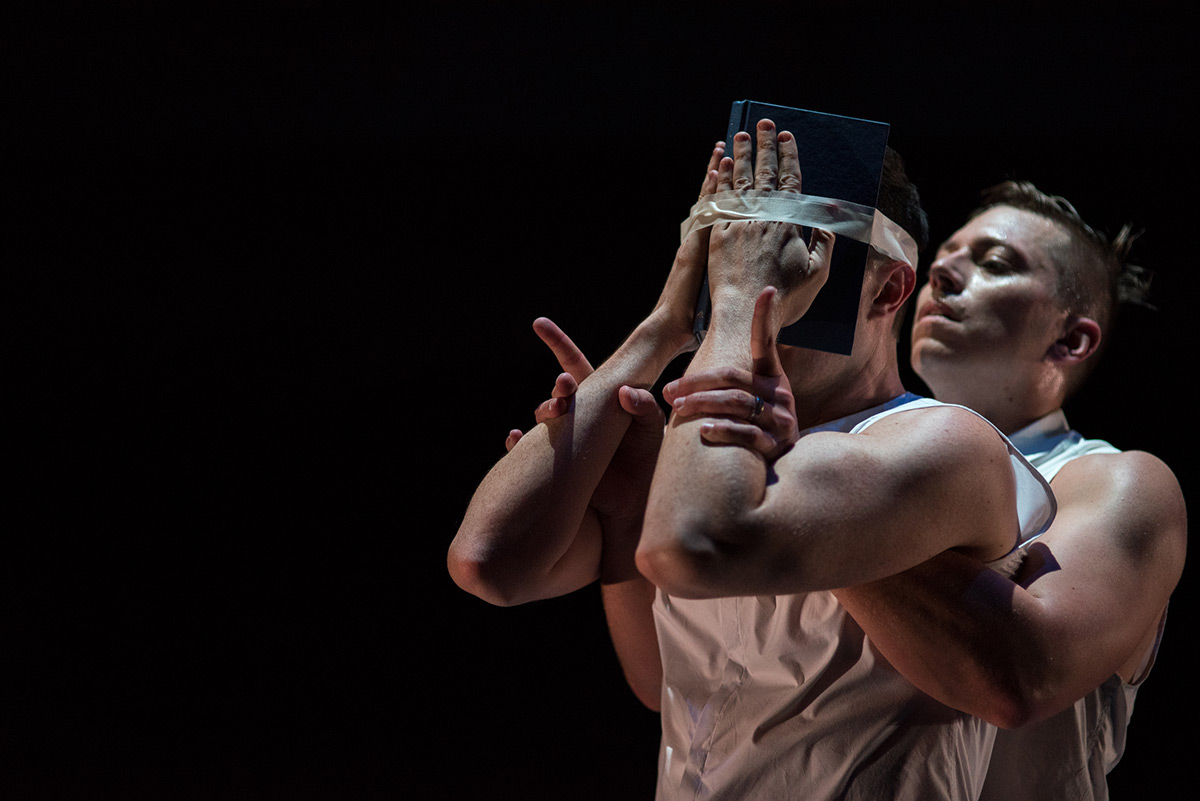
© Hillary Goidell. (Click image for larger version)
Brilliant Alarm, choreographed in 2017 by Co-Artistic Directors Wendy Rein and Ryan T. Smith, was already in progress as we entered the space. Books lined the perimeter of the stage, and the cast of six carefully surveyed and consumed the tomes, absorbing the words and details within. As the lights went down and the piece began in earnest, knowledge would continue as the narrative core. Through a series of scenes and vignettes, in which the books acted not as props but almost as another cast member, Alarm made the viewer consider the complicated relationship we have with information, language and rhetoric. Rein and Smith approached the theme with a wide lens in order to demonstrate its complexity. How we can be buoyed by knowledge; how it can be a driving force; and how it can be manipulated into a controlling mechanism. Biceps flexed in power stances spoke to knowledge’s strength and power. Spinning lifts and turns mirrored how concepts circle and ruminate in the mind. Several choreographic postures and phrases suggested a search or a hunt for answers – the arms stretching away from the body, the palm coming to the brow to survey the horizon. Duets found the sextet rebounding off of each other, their desire for support, certainty and steadiness remaining elusive. A spell-casting motif repeated several times, lightning bolts from one dancer’s fingers being wickedly thrust onto others. And as Alarm reached its final seconds, a book was taped around Smith’s face, words and ideas blinding him.
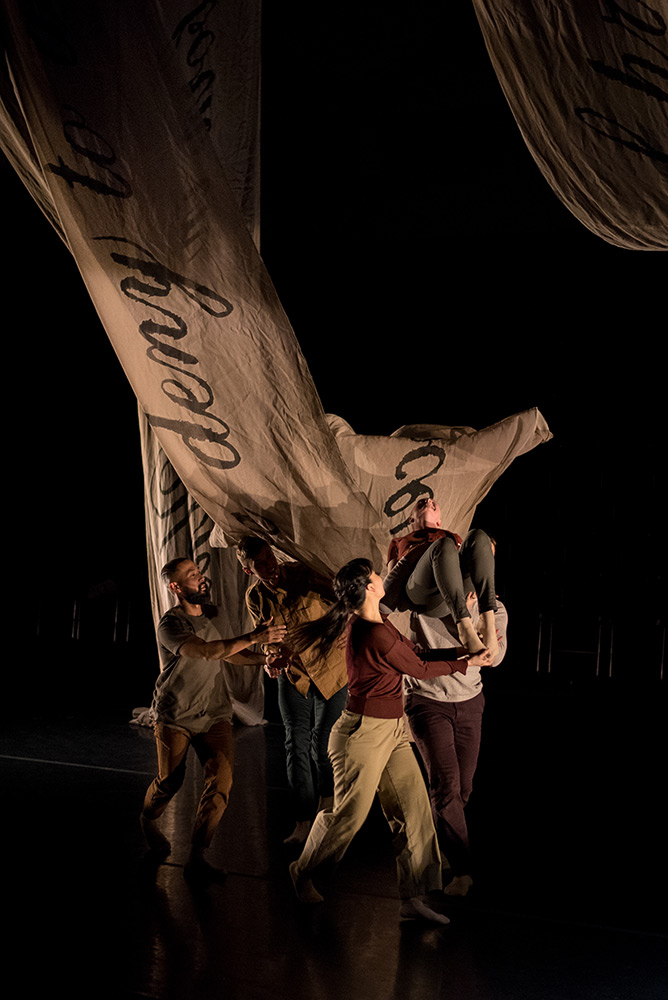
© Hillary Goidell. (Click image for larger version)
Katerina Wong’s (RAWdance’s new Associate Artistic Director) latest work, 14, responds to the 14th amendment, and to provide context she included the following program notes, “The 14th amendment of the United States Constitution ensures due process and equal protection of the laws for all persons…the amendment still stands at the heart of many current social and political battlegrounds…” Wong certainly burrowed into these words and crafted a dance that felt purposely precarious and unsettled. But what impressed most was that 14 was able to tackle complex themes while remaining cohesive in vision. From start to finish, the contemporary choreography was appropriately charged. There was a sense of forward motion to the steps – walking, running, crawling, the lifted gaze – that was fueled by equal parts desperation and resolve. The score, arranged by Wong with support from Natasha Adorlee, was peppered with political sound bytes that inspired in one moment and terrified in another. Large pieces of fabric with words from the 14th amendment hung from the ceiling, and throughout the piece, each one was released and pooled onto the stage, the words dramatically perfuming the scene with their grandeur. But for me, the most striking element to 14 was that Wong opted to make it a quintet. It was such an inspired compositional choice. Much of the choreography in 14 took the form of duets. With five cast members, there was always someone excluded, isolated from the rest of the group, left without support. Considering 14’s political inspiration, I found that to be particularly poignant.
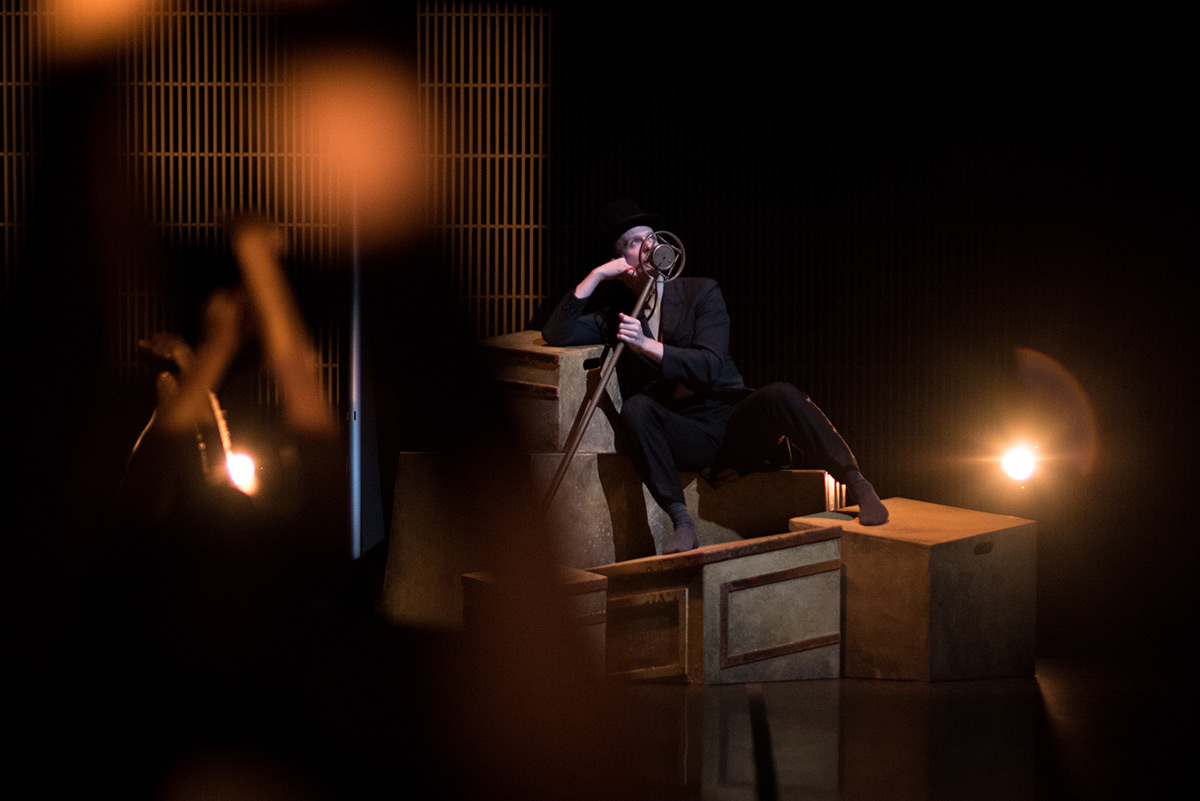
© Hillary Goidell. (Click image for larger version)
While I had read that Rein and Smith’s new work Roar looks to politics and gender as narrative threads, I saw the piece as more about perception and viewership, and a rather poetic statement too. It challenges the audience to think about what lies beneath the surface and does so in such a clever theatrical container. Art deco scenery, bedazzled costumes and an old-school microphone transport the audience to a Roaring 1920s club. Smith lounges at the microphone, crooning some stellar melodies – I actually thought he was lip-syncing, and learned later that he was in fact singing, and wow! Five women enter the space, all glitz and glamour, with high kicks and cheeky Charleston choreography. We were at a ‘show within a show’, where entertainment reigned supreme and gilded fun was served up in champagne coupes. But that mood was not long for this world. Soon the scene shifted and the showy façade began to erode. Performance smiles disappeared and were replaced by looks of anger and discontent. The tempo of the music slowed, and movements that a few minutes earlier had looked fun and light became strained, effortful and heavy. Dancers were dragged across the floor in control and manipulation. Before the shift, the stage had radiated glee and delight and after, each moment had felt sobering and dark. Fantasy followed by reality. Not only had Roar brought both states to light with extreme acuity, but also, it left me curious. Are fantasy and reality side-by-side conditions? Is there more of a vertical relationship between the two? Or are they more of a feedback loop, constantly informing the other? While I don’t have answers, prompting these kinds of questions is for me, a measure of good work.









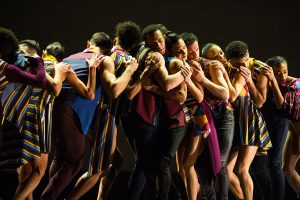


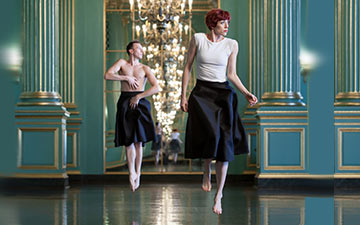
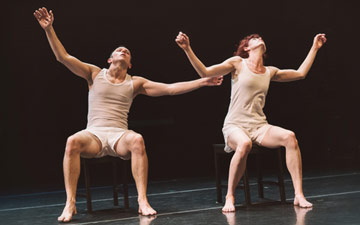
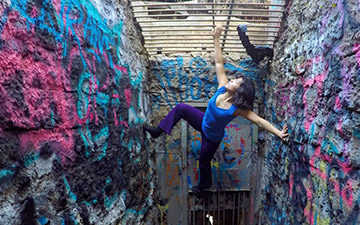


You must be logged in to post a comment.